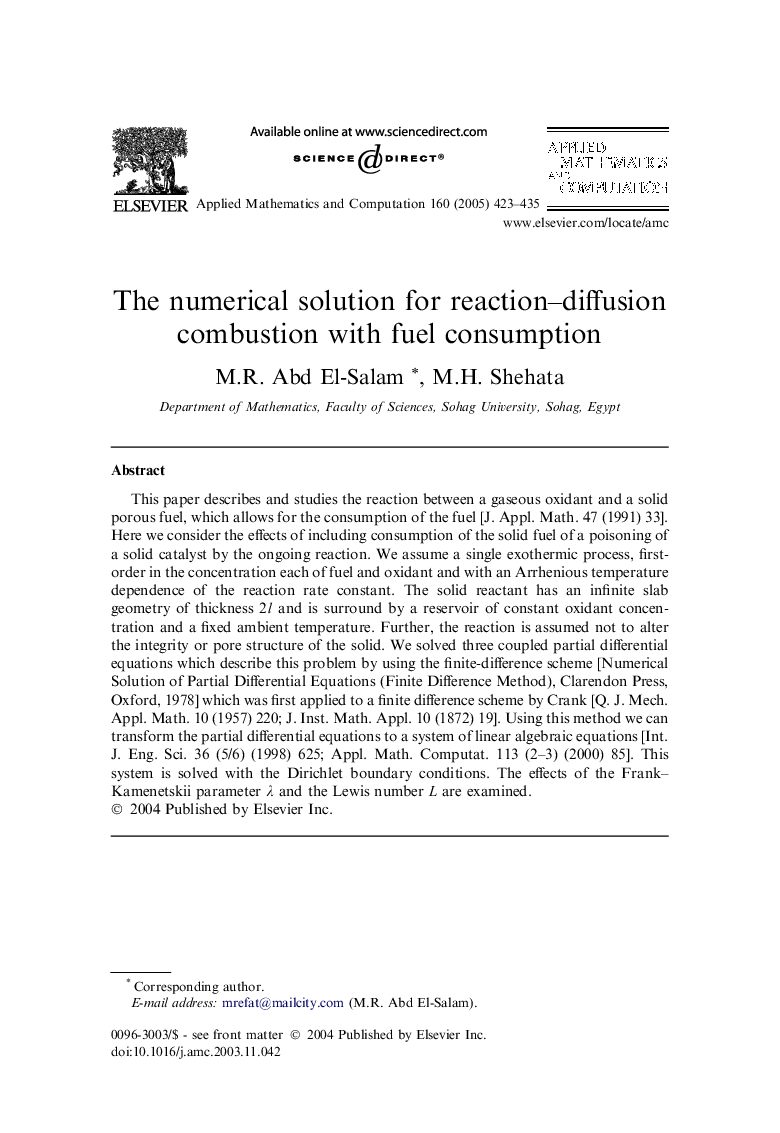| Article ID | Journal | Published Year | Pages | File Type |
|---|---|---|---|---|
| 9507236 | Applied Mathematics and Computation | 2005 | 13 Pages |
Abstract
This paper describes and studies the reaction between a gaseous oxidant and a solid porous fuel, which allows for the consumption of the fuel [J. Appl. Math. 47 (1991) 33]. Here we consider the effects of including consumption of the solid fuel of a poisoning of a solid catalyst by the ongoing reaction. We assume a single exothermic process, first-order in the concentration each of fuel and oxidant and with an Arrhenious temperature dependence of the reaction rate constant. The solid reactant has an infinite slab geometry of thickness 2l and is surround by a reservoir of constant oxidant concentration and a fixed ambient temperature. Further, the reaction is assumed not to alter the integrity or pore structure of the solid. We solved three coupled partial differential equations which describe this problem by using the finite-difference scheme [Numerical Solution of Partial Differential Equations (Finite Difference Method), Clarendon Press, Oxford, 1978] which was first applied to a finite difference scheme by Crank [Q. J. Mech. Appl. Math. 10 (1957) 220; J. Inst. Math. Appl. 10 (1872) 19]. Using this method we can transform the partial differential equations to a system of linear algebraic equations [Int. J. Eng. Sci. 36 (5/6) (1998) 625; Appl. Math. Computat. 113 (2-3) (2000) 85]. This system is solved with the Dirichlet boundary conditions. The effects of the Frank-Kamenetskii parameter λ and the Lewis number L are examined.
Related Topics
Physical Sciences and Engineering
Mathematics
Applied Mathematics
Authors
M.R. Abd El-Salam, M.H. Shehata,
